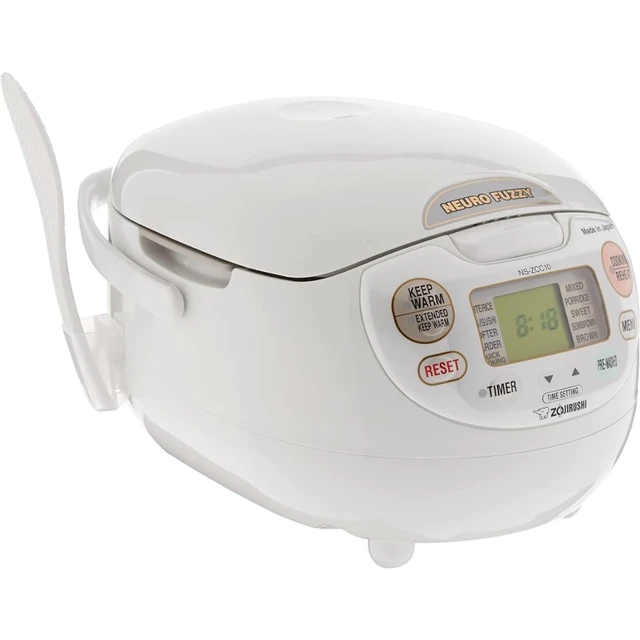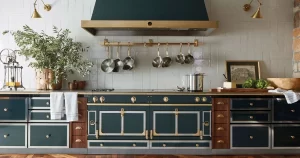Are white cabinets and white appliances easy to clean?
Introduction:
The ease of cleaning is an essential consideration when choosing materials and appliances for your kitchen. Both white cabinets and white appliances can provide a clean and fresh aesthetic to your kitchen design. However, it is important to understand the maintenance and cleaning requirements associated with these elements. In this article, we will explore whether white cabinets and white appliances are easy to clean, examining factors such as material selection, finishes, and cleaning methods. By understanding these factors, you can determine the level of maintenance and cleaning required for white cabinets and white appliances in your kitchen.

Are white cabinets and white appliances easy to clean?
White Cabinets:
a. Material Selection: The ease of cleaning white cabinets depends on the material chosen. Some common materials for white cabinets include wood, laminate, and thermofoil. Each material has its own cleaning requirements and considerations.
b. Wood Cabinets: Wood cabinets, especially those with a painted finish, can be fairly easy to clean. Use a mild cleaning solution and a soft cloth to wipe away any spills or stains. Avoid using harsh abrasives or abrasive scrub brushes that can damage the finish.
c. Laminate Cabinets: Laminate cabinets are known for their durability and easy maintenance. Wipe down the surface with a non-abrasive, mild cleaning solution and a soft cloth. Avoid using abrasive materials or excessive water, as they can cause damage to the laminate surface.
d. Thermofoil Cabinets: Thermofoil cabinets have a vinyl layer that is heat-pressed onto an MDF (medium-density fiberboard) core. These cabinets are relatively easy to clean, as the vinyl surface is smooth and resistant to stains. Use mild soap and water or a non-abrasive cleaning solution and a soft cloth to clean thermofoil cabinets.
White Appliances:
a. Material and Finish: White appliances are typically made of materials such as stainless steel, enamel, or painted finishes. The ease of cleaning depends on the specific material and finish of the appliances.
b. Stainless Steel: Stainless steel appliances are popular for their sleek and modern appearance. While stainless steel is generally easy to clean, it is prone to fingerprints, smudges, and water spots. Use a stainless steel cleaner or mild soap and water to clean stainless steel appliances. Wipe the surface in the direction of the grain for the best results.
c. Enamel: Enamel-coated appliances have a smooth and glossy finish that is relatively easy to clean. Use a non-abrasive, mild cleaning solution and a soft cloth to wipe down the surface. Avoid using abrasive materials or cleaners that can scratch or damage the enamel finish.
d. Painted Finishes: Some appliances, such as refrigerators or ranges, may have a painted finish. Cleaning painted appliances is similar to cleaning white cabinets. Use a mild cleaning solution and a soft cloth to wipe away any spills or stains. Avoid using abrasive materials that can scratch or damage the painted surface.
Cleaning Tips and Techniques:
a. Regular Maintenance: Regular maintenance is key to keeping both white cabinets and white appliances clean. Wipe down surfaces regularly with a soft cloth to remove dust, dirt, and fingerprints. This helps prevent the buildup of grime and makes cleaning easier in the long run.
b. Spills and Stains: Promptly clean up spills or stains to prevent them from setting in and becoming more difficult to remove. Use a mild cleaning solution appropriate for the specific material and finish of your cabinets or appliances. Avoid using abrasive materials or harsh chemicals that can damage the surfaces.
c. Non-Abrasive Cleaners: When cleaning white cabinets and appliances, opt for non-abrasive cleaners to avoid scratching or damaging the surfaces. Mild dish soap or a mixture of warm water and vinegar can be effective in removing dirt and grime. Test any cleaner on a small, inconspicuous area before applying it to the entire surface.
d. Soft Cloths or Sponges: Use soft, lint-free cloths or non-abrasive sponges when cleaning white cabinets and appliances. Microfiber cloths or gentle scrubbing pads can help lift dirt and stains without causing damage. Avoid using abrasive scrub brushes or steel wool, as they can scratch the surfaces.
e. Drying and Polishing: After cleaning, ensure that cabinets and appliances are thoroughly dried to prevent water spots or streaks. Use a dry, clean cloth to buff the surfaces lightly, restoring their shine and luster.
Prevention and Maintenance Tips:
a. Cabinet Hardware: Keep cabinet hardware, such as knobs and handles, clean and free of dirt or grime by regularly wiping them down with a mild cleaning solution. Pay attention to areas that are frequently touched, as they can accumulate more dirt and oils.
b. Appliance Maintenance: Regularly maintain appliances by following the manufacturer’s instructions for cleaning and maintenance. This may include cleaning filters, checking seals, and removing any built-up grime or debris.
c. Protective Measures: Consider using protective measures to minimize the risk of stains or damage. For cabinets, adding protective liners to shelves and drawers can prevent spills from seeping into the material. For appliances, using appliance-specific cleaners or applying a protective coating can help maintain their appearance.
Conclusion:
White cabinets and white appliances can contribute to a clean and fresh aesthetic in your kitchen design. While both elements can be relatively easy to clean, the specific ease of cleaning depends on factors such as material selection and finishes. Regular maintenance, prompt cleaning of spills, and the use of non-abrasive cleaners and soft cloths are important for both white cabinets and appliances. Understanding the specific cleaning requirements and techniques for the materials and finishes in your kitchen will help ensure that your white cabinets and appliances remain clean and pristine. With proper care and maintenance, white cabinets and appliances can continue to enhance the cleanliness and aesthetics of your kitchen for years to come.

